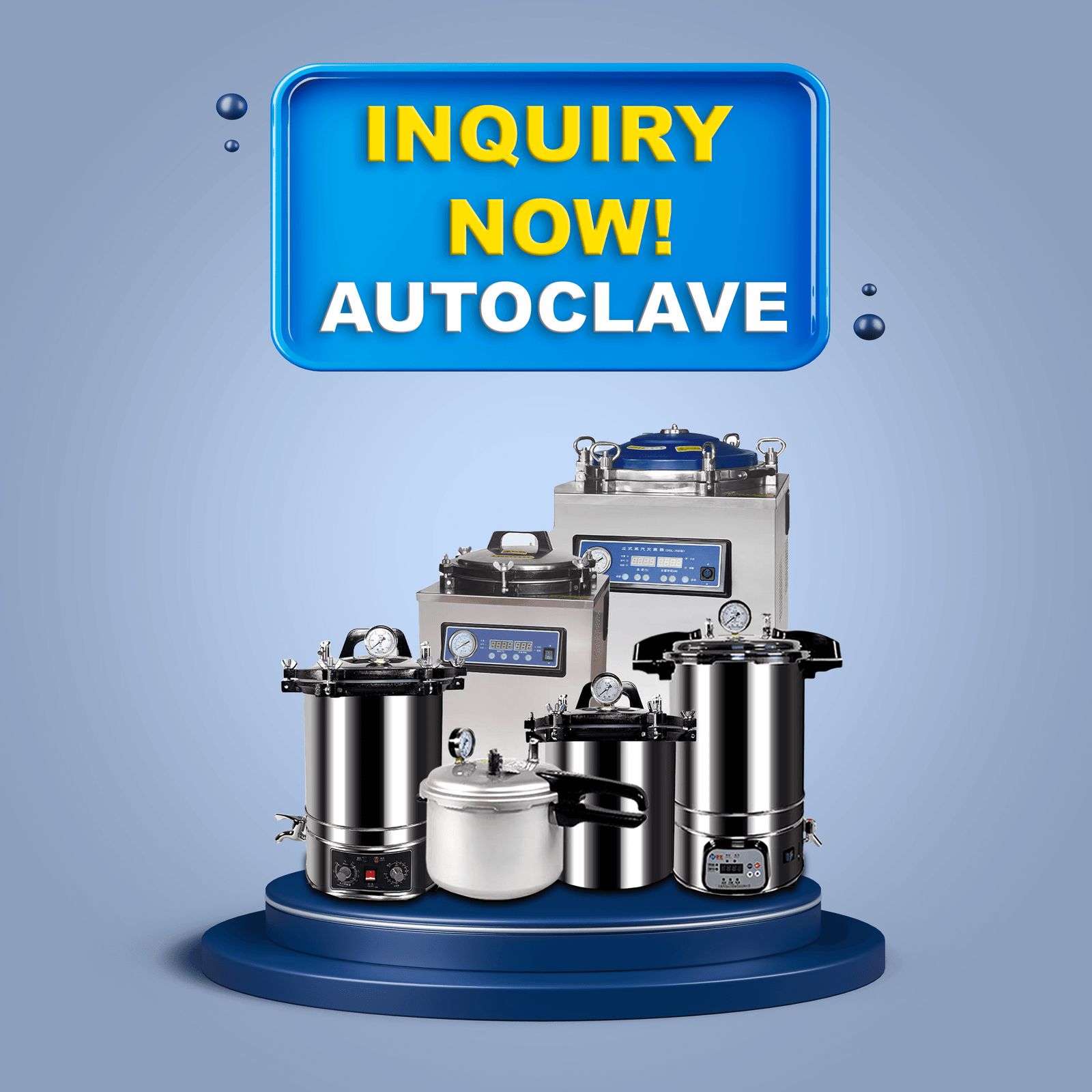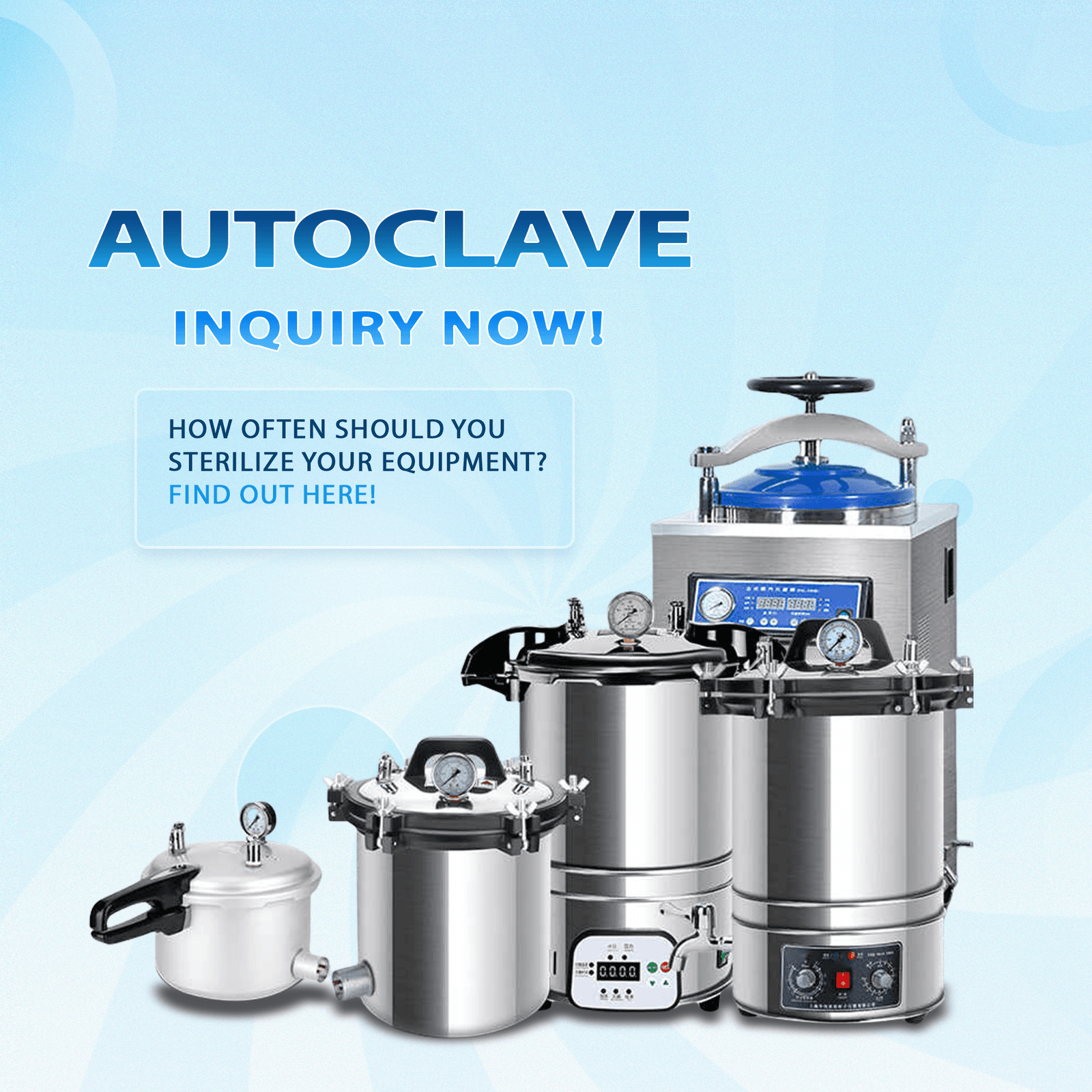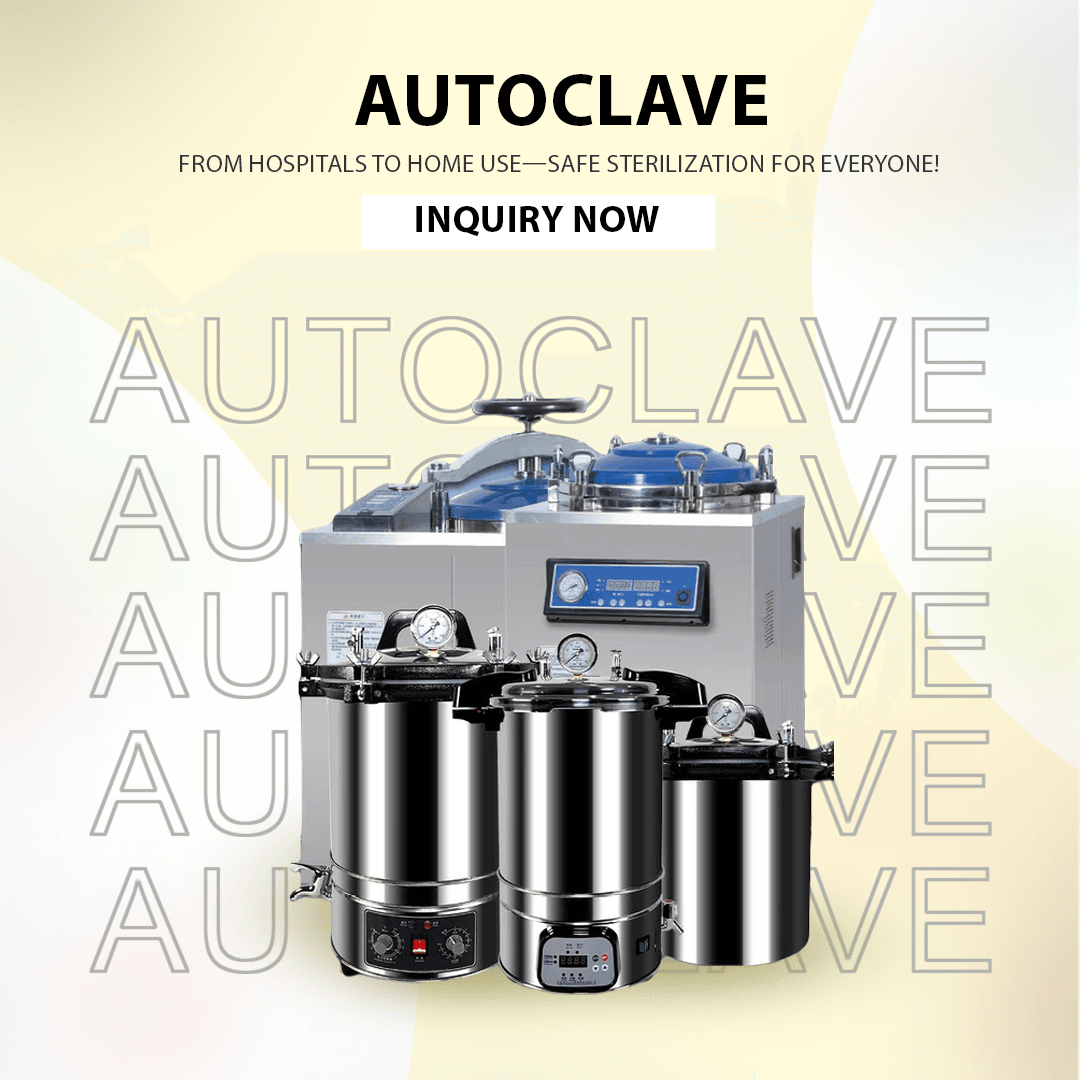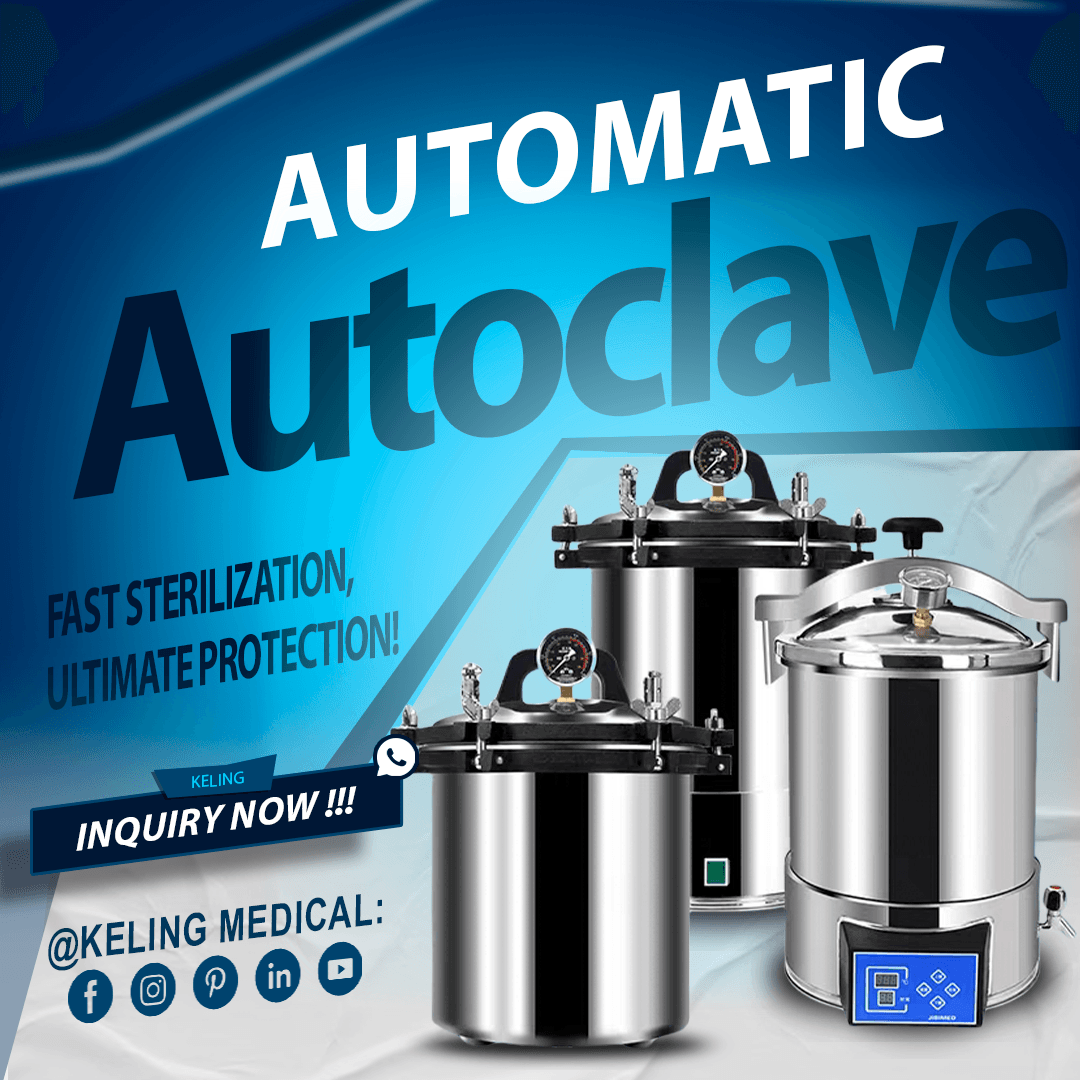
This article provides an in-depth exploration of autoclaving sterilization, including its definition, process steps, effectiveness, and essential safety considerations. Designed for medical device distributors, dealers, and procurement professionals, this guide will empower you to make informed decisions and ensure the highest standards of safety and compliance for your clients.
The method of Autoclaving sterilization requires high-pressure saturated steam at high temperatures to eliminate all living microorganisms such as bacteria, viruses, fungi, and spores. The autoclave device generates a controlled pressurized environment necessary for comprehensive sterilization during the process.
Both “autoclaving sterilization” and “autoclave sterilization” are terms referring to an identical fundamental sterilization process. Various professional and regulatory standards identify autoclaving sterilization as the best practice for decontaminating reusable medical devices and laboratory equipment alongside other materials.
Autoclaving sterilization is critical for maintaining infection control standards and meeting regulatory requirements while ensuring patient safety. Hospitals, clinics, laboratories, and manufacturing settings depend on this process to maintain essential sterility standards. The process meets international standards and stands as a fundamental element of present-day healthcare and life sciences research.
Do autoclaving sterilization and autoclave sterilization define the same procedure?
Autoclaving sterilization and autoclave sterilization represent identical sterilization procedures. The terms describe the sterilization process achieved by using an autoclave which applies moist heat under pressure. The terminology difference between the two terms exists only semantically since scientific and regulatory literature accept both terms.
Autoclaving sterilization emphasizes the action or process.
Autoclave sterilization highlights the equipment used.
Proficient communication with regulatory bodies and healthcare professionals requires familiarity with both terms across global client bases. Technical documentation along with procurement specifications and compliance guidelines both frequently include these terms.
For further reading, see:
All items require complete cleaning to eliminate organic matter and debris before undergoing sterilization.
All instruments and materials enter autoclaves through sterilization wraps or pouches that preserve their sterile condition post-processing.
The autoclave chamber must contain items arranged to allow enough room for steam to flow freely.
Overloading is avoided to prevent incomplete sterilization.
Sterilization cycle parameters including temperature, pressure, and duration depend on both the type and number of items being processed.
Standard sterilization cycles function at a temperature of 121°C (250°F) and a pressure of 15 psi over a duration of 15 to 30 minutes.
The sterilization process uses elevated temperature cycles such as 134°C/273°F for specific applications.
The autoclave first removes air from the chamber and then fills it with saturated steam.
Steam reaches every surface to provide even heat distribution.
The sterilization process uses heat and pressure to denature proteins and break down cell membranes which results in the destruction of all microorganisms.
The cycle time is carefully managed to achieve total sterilization.
The sterilization cycle finishes when it vents steam from the chamber while resetting pressure to atmospheric levels.
Autoclaves with drying phases help prevent moisture retention.
Sterilized items undergo removal with sterile technique and proper storage to preserve their sterile condition until usage time.
Autoclaving sterilization has been scientifically established to eradicate every category of microbial life including highly resilient bacterial spores.
Biological indicators like spore strips together with chemical indicators such as autoclave tape validate the effectiveness of the sterilization process.
Autoclaving sterilization provides consistent results every time and complies with healthcare and laboratory international standards.
Only trained personnel should operate autoclaves.
Wear personal protective equipment including heat-resistant gloves, goggles, and lab coats.
Users must exercise caution when opening the autoclave door after a cycle because residual steam and heat might cause burns.
Ensure the chamber is not overloaded to maintain proper steam flow.
Wait for items to cool down before touching them to prevent burn injuries.
Autoclave operation depends on consistent maintenance routines that involve inspecting gaskets and calibrating systems while keeping the chamber clean.
Malfunctioning autoclaves should be serviced immediately.
Not all materials are suitable for autoclaving. Heat-sensitive plastics along with volatile chemicals and electronic devices should never go through the autoclaving process.
Always check manufacturer guidelines for compatibility.
Keep comprehensive records for all sterilization cycles which document both parameters and the results from biological/chemical indicators.
Organizations need complete documentation to meet regulatory standards and ensure quality control.
The sterilization method of autoclaving stands as the foundation for preventing infection and maintaining quality standards across medical, laboratory, and industrial fields. The method stands as the top choice for sterilizing critical instruments and materials because of its exceptional effectiveness and reliability while adhering to global standards. Medical device distributors along with dealers and procurement professionals who understand autoclaving sterilization and its safe usage can achieve maximum safety levels with complete client satisfaction and full regulatory compliance.
Our experienced team stands ready to provide you with expert guidance and advanced autoclave solutions specifically designed for your business needs.
Autoclaving sterilization is the process of using high-pressure steam in a sealed chamber to kill all microorganisms on instruments and materials, making them completely sterile.
Autoclaving sterilization uses moist heat under pressure, making it faster and more effective than dry heat or chemical methods for most reusable medical and laboratory items.
Commonly autoclaved items include surgical tools, laboratory glassware, media, textiles, certain plastics, and biohazardous waste.
Yes, items sensitive to heat or moisture, certain plastics, volatile chemicals, and electronic devices should not be autoclaved.
You can find more information at What is Autoclave Sterilization? そして オートクレーブとは?.
Are you searching for reliable autoclave solutions or professional advice on sterilization for your business? Our expert team is here to help with tailored recommendations and support.
Eメール inquiry@shkeling.com
WhatsApp: +8618221822482
Contact us today for a consultation or quote, and let us help you achieve the highest standards of sterilization and safety!

医療や研究所の環境では、患者の安全を守り、感染を制御するための重要なステップとして、すべての機器や材料から危険な微生物を完全に除去することを優先しなければならない。オートクレーブ滅菌

医療業界は厳しい規制のもとで運営されており、患者を感染から守り、安全基準を維持するために医療器具の無菌化が求められています。強力なオートクレーブ滅菌器は、医療機器滅菌の中核をなすものです。

オートクレーブは、医療器具や医療材料を滅菌し、感染症の抑制に役立つため、医療に不可欠である。定期的なメンテナンスと適切な洗浄によって、これらの機器が効果的に機能するかどうかが決まります。医療用

オートクレーブは、医療器具や実験器具、その他の重要な材料の無菌状態を維持するために、医療と感染制御において不可欠な機器です。医療機器サプライヤーと調達エキスパート

医療従事者は、感染症を効果的に予防し、患者の健康を守るために、器具や材料の滅菌を優先しなければなりません。オートクレーブ滅菌は、非常に信頼できる方法であることが証明されており、世界中で広く使用されています。

医療業界では厳しい感染対策が要求されるため、安全性と衛生を確保するためには特定の用語や道具が不可欠である。無菌状態が要求される医療現場や研究室では